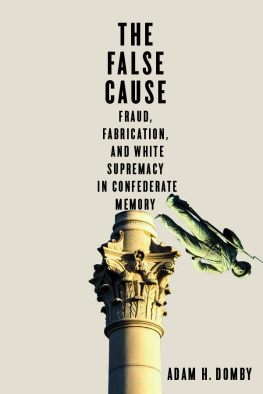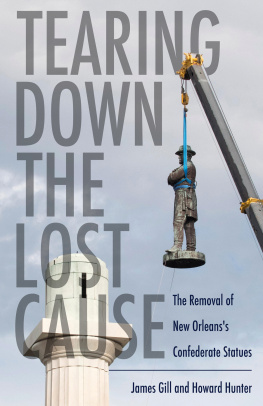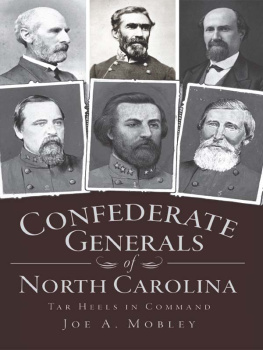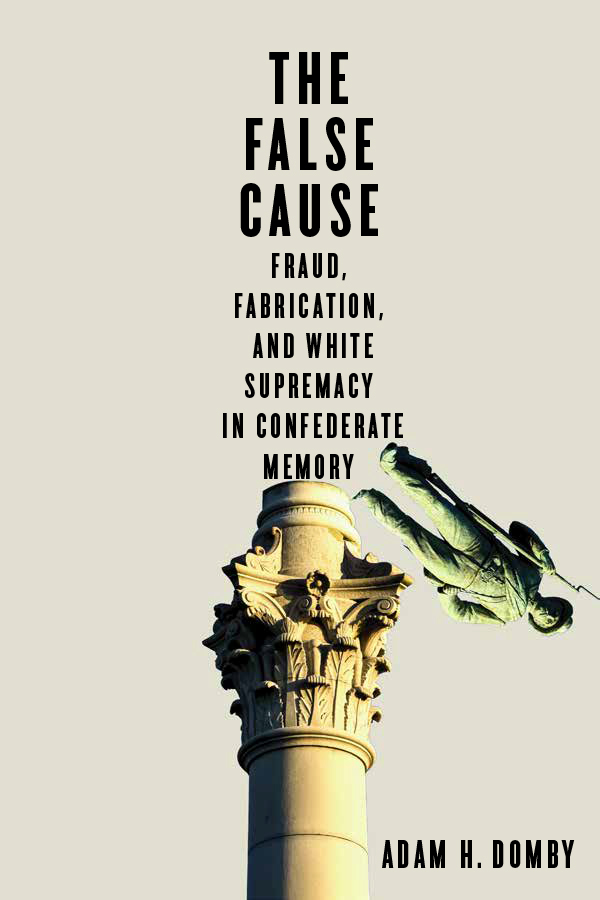The False Cause
Fraud, Fabrication, and White Supremacy in Confederate Memory
Adam H. Domby
University of Virginia Press
Charlottesville and London
University of Virginia Press
2020 by the Rector and Visitors of the University of Virginia
All rights reserved
Printed in the United States of America on acid-free paper
First published 2020
9 8 7 6 5 4 3 2 1
Library of Congress Cataloging-in-Publication Data
Names: Domby, Adam H., author.
Title: The false cause : fraud, fabrication, and white supremacy in Confederate memory / Adam H. Domby.
Description: Charlottesville : The University of Virginia Press, 2020. | Includes bibliographical references and index.
Identifiers: LCCN 2019024406 (print) | LCCN 2019024407 (ebook) | ISBN 9780813943763 (hardcover) | ISBN 9780813943770 (epub)
Subjects: LCSH : Soldiers monumentsMoral and ethical aspectsSouthern States. | White supremacy movementsUnited StatesHistory. | United StatesHistoryCivil War, 18611865MonumentsMoral and ethical aspects. | United StatesRace relationsHistory19th century. | United StatesRace relationsHistory20th century. | United StatesHistoriography.
Classification: LCC E 645 . D 66 2020 (print) | LCC E 645 (ebook) | DDC 320.56/909dc23
LC record available at https://lccn.loc.gov/2019024406
LC ebook record available at https://lccn.loc.gov/2019024407
Cover art: Confederate Soldiers & Sailors Monument, Libby Hill Park, Richmond, VA, 1894 (Shutterstock.com/Felix Lipov)
For Matthew and Eli
Contents
The False Cause
On August 20, 2018, the night before classes began at the University of North Carolina at Chapel Hill (UNC), hundreds of protesters gathered in front of a 105-year-old Confederate monument nicknamed Silent Sam to demand its removal. Four large banners masked the statue from view. One called for a world without white supremacy, while another emblazoned with Not One More listed victims of racial violence. A small number of counterprotesters, some of whom had ties to neo-Nazi and other white supremacist organizations, scuffled with the activists.
Though the rally was nominally in support of history graduate student Maya Little, who in April protested the monument by pouring paint and blood on it, organizers had another purpose, unbeknownst to most. A few of the leaders had planned ahead, using the large banners blocking Silent Sam to hide their preparations to topple the statue. A rope was attached to the monument, and around 9:30 p.m., students pulledand down came Sam. Ripped from his place of prominence at the entrance to campus, the bronze man was placed in storage as university administrators wrung their hands. The ensuing debates around what to do with the fallen monument ultimately led to the resignation of UNCs chancellor and the removal of the statues base in January 2019. While the statues ultimate fate remains undecided as of February 2019, it is clear that the local community does not want the monument returned.
This distaste for the monument did not form overnight. In 2003, when UNC professor Gerald Horne called for Sam to be pulled down, the university dismissed the idea out of hand. But the next fifteen years saw a shift, and between August 2017 and December 2018, at least nineteen UNC departments passed resolutions calling for the removal of the statue. Faculty in numerous departments signed public letters supporting protesters. The governor, the mayor of Chapel Hill, and eventuallydue to pressure from protesterseven the UNC chancellor called for removal of What changed?
Several factors led Chapel Hill residents to connect Confederate monuments with white supremacy. Foremost, the national conversation about such symbols changed after white supremacists terrorist attacks in Charleston and Charlottesville in 2015 and 2017, respectively. By 2018, many Americans had realized there were deep connections between Confederate monuments and white supremacyconnections that went beyond the causes of the Civil War. This was not a new discovery to historiansbut the scholarly consensus on the topic reached the public in fresh ways. While the murder of black churchgoers in Charleston focused attention on Confederate symbols, the events in Charlottesville, where neo-Nazis and other hate groups gathered in support of a monument to Robert E. Lee, centered attention specifically on monuments and how they drew white supremacists. Most Chapel Hill residents disliked having a magnet that attracted Nazis to their community, no matter what it stood for.
But the groundwork for tearing down Silent Sam had been laid even earlier. In 2011, two events changed the debate locally. The first was the formation of the Real Silent Sam Coalition, a group of activist students and community members who felt that UNC needed to address its problematic racial history. These activists and the cohort that followed them would educate the public about the ties between white supremacy and Confederate monuments. The second was the publicization of the original dedication speech given by Confederate veteran Julian Carr. Published in a Daily Tar Heel letter to the editor, excerpts from the address provided activists with a powerful talking point to counter claims that the monument had nothing to do with race. Carrs own words, discussed more fully in this books first two chapters, not only explicitly tied the monument to celebrating white supremacy but also lauded racial violence, including the speakers horsewhipping of an unnamed African American woman until her skirt hung in shreds.
When I first published Carrs words in the Daily Tar Heel in 2011, I had hoped to teach a few people about the Jim Crow South. I did not realize how activists and other scholars would use the speech to shift the debate around the monument. Activists publicized the speech and disseminated additional historical research to educate the public through op-eds, protest signs, poetry readings, and speeches. By 2017, almost every news article published about the monument quoted the racist dedication speech. For anyone following the story, it has become impossible to deny that the monument had at least some ties to white supremacy without willfully ignoring evidence. As public opinion shifted, the monuments location in Chapel Hill became untenable. Sam ceased to represent the values of the community.
Though some decried removing Silent Sam as sanitizing history or erasing the past, the actual narrative of the past that Sam was designed to propagate was never accurate in the first place. The statue was supposed to teach future generations a whitewashed past that covered distasteful facts with fabricated memories. Indeed, Carrs speech was not just racist but also filled with deceit. A false past, premised in part upon exaggerations, fraud, and invented stories, provided ideological support for white supremacy during the Jim Crow era.
This book examines the connections between lies, historical memory, and white supremacy. The collective historical memory propagated by Carr and other Confederate veteranscalled the Lost Cause narrativecelebrated the Confederacy and its soldiers despite their defeat on the battlefield. Aspects of this narrative, championed by Confederate veterans and their heirs, remain widely accepted today. This book details how white supremacy, fraud, and fabricated memories have fundamentally shaped how Americans, especially white southerners, recalled the past. Lies and falsehoods influenced American understandings of the cause of the war, the military prowess of Confederate soldiers, the level of dissent across the Civil War South, the frequency and causes of desertion, the nature of slavery, and the role of racism in American history. Moreover, at the turn of the twentieth century, a Lost Cause narrative celebrating white supremacy became a crucial rhetorical tool for white North Carolinians in their efforts to justify segregation, disenfranchisement, and racial discrimination. As one historian has argued, this narrative provided a foundation on which southerners built the Jim Crow system. The devastating interplay of white supremacy and false memories of the past during the late nineteenth and early twentieth centuries is the focus of this book. The invented narratives propagated during the Jim Crow era not only continue to exist but still serve to perpetuate racial inequality.





